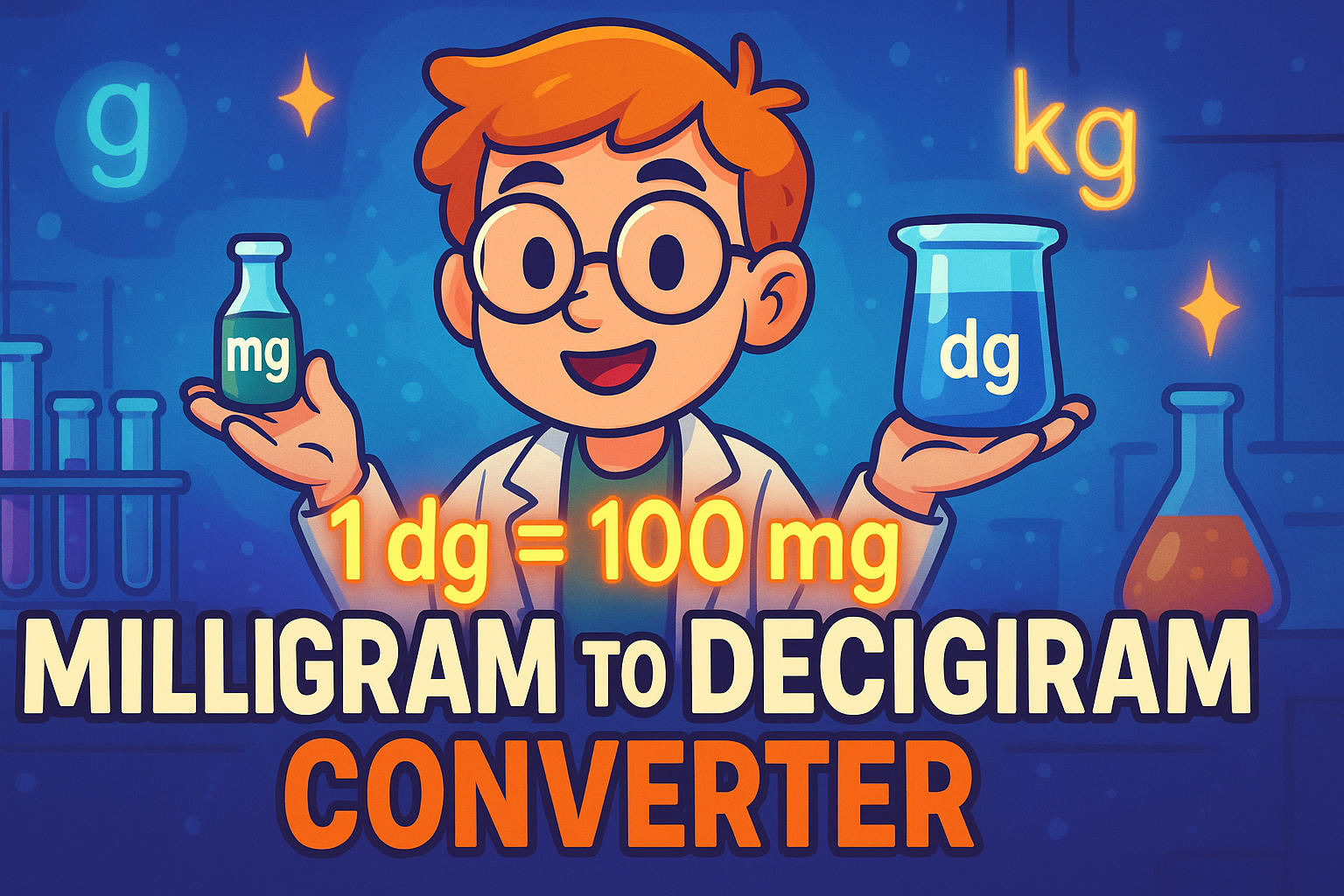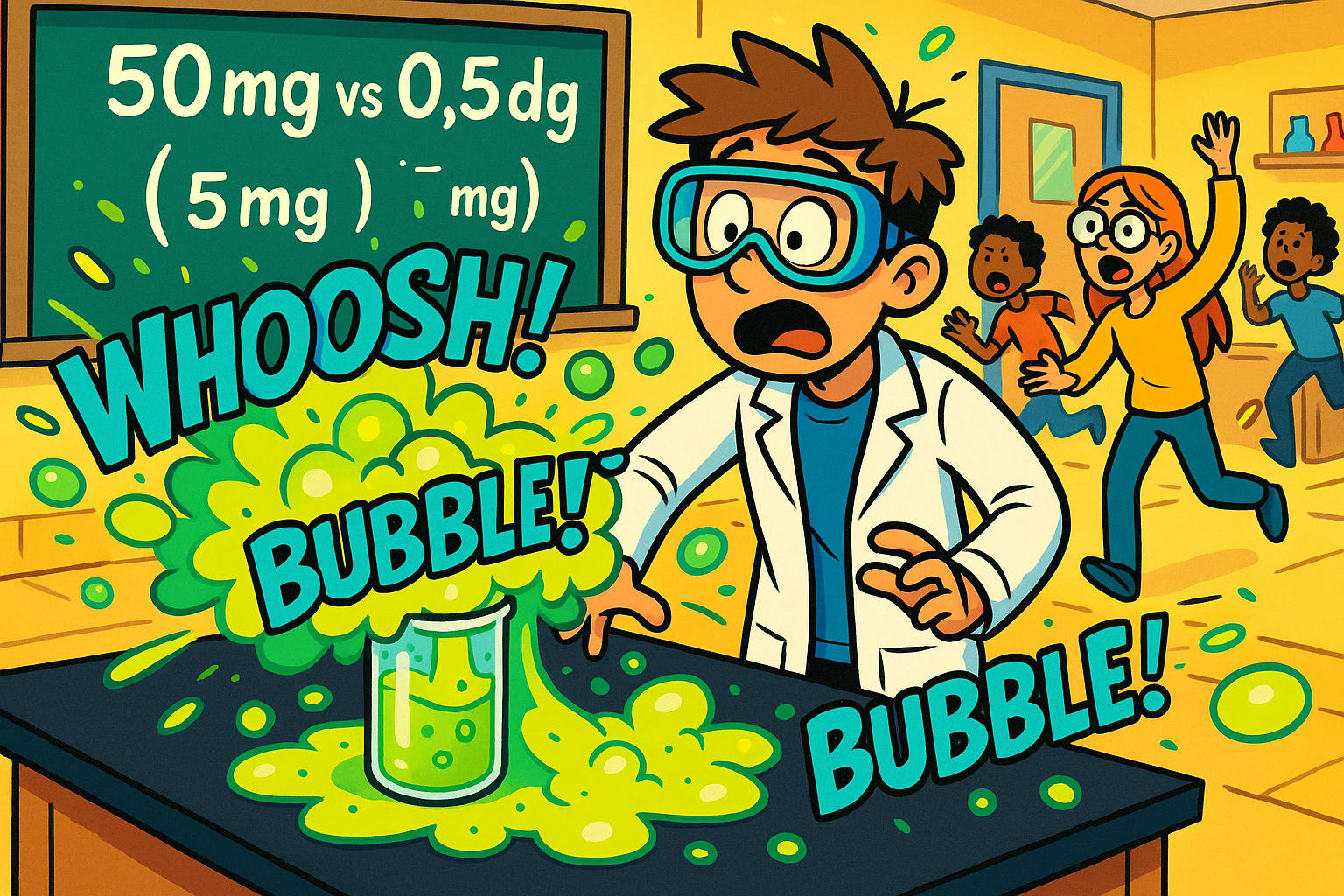milligram to decigram (mg to dg) – How to convert mg to dg
Need to convert milligrams to decigrams? It may seem like a tiny shift on the metric scale, but it's essential in chemistry, cooking, and lab work. This guide explains exactly how to switch from mg to dg, when it’s useful, and why precision matters, especially when dealing with measurements this small.
Milligrams and Decigrams ?
A milligram (mg) is one of the smallest metric units of mass. It equals one-thousandth of a gram, or 0.001 g. Milligrams are used in medicine, nutrition labels, supplement dosing, and chemical experiments, where just a few milligrams can make a major difference. It is used in: pharmaceuticals, science labs, and precise measurements
Try our Milligram to Kilogram Converter for additional conversions in this range.
A decigram (dg) is a larger unit than a milligram, but still smaller than a gram. It equals 0.1 grams, or 100 milligrams. You might not see it used often in everyday life, but it’s helpful when working with intermediate weights, like ingredients in formulas, small food quantities, or dry compounds.
Need the reverse? Use our Decigram to Milligram Converter for quick back-calculations.

Conversion Formula
To convert milligrams to decigrams, divide by 100:
dg = mg ÷ 100
Example:
500 mg ÷ 100 = 5 dg
You can use our milligram to decigram converter to skip the mental math and get your answer instantly. Or, explore the Weight Converter if you’re dealing with a variety of units.
Did you know?
-
Caffeine content in a cup of coffee is usually measured in milligrams — around 95 mg per cup. That’s less than one-tenth of a decigram, but it still wakes most of us up!
-
In classroom science kits, powders and salts are often labeled in decigrams for clarity, especially when students are learning conversions between grams and smaller units.
-
Some allergy medications contain active ingredients in doses as small as 2.5 mg. That’s why doctors and pharmacists always emphasize accurate milligram measurements.
-
The term “decigram” isn’t common in daily conversation, but it shows up in scientific textbooks, especially when teaching the full range of metric prefixes in order.
The Experiment That Failed by 40 mg
“A decimal gone wrong in chemistry class”
In 2012, a high school student conducting a chemistry lab in New Zealand accidentally added 50 milligrams of a compound instead of the required 0.5 decigram (which is 5 mg). A misplaced zero caused a small reaction to bubble over unexpectedly, forcing an evacuation of the classroom. Thankfully, no one was harmed, but the story became a local legend. It also became a reminder for teachers: double-check conversions and clarify metric units like mg vs dg, especially with young learners.

Conclusion
Converting milligrams to decigrams (mg to dg) might seem simple, but accuracy is everything when you’re working with precise amounts. For more unit options, explore the Converter to handle all your metric conversions in one place. One quick conversion can make all the difference.

